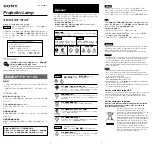
DSPbR Series
– User’s Manual
Document Number 00000.B Page 11/75
that the gain through the repeater can be considerably increased and the cell extension afforded greater
coverage and signal strength.
A useful feature using this technology is the choice of setting receiver gating on a respective channel. This can
be set to open above a fixed dBm input level, or at a pre-determined level above a dynamic input noise level or
simply disabled keeping the receiver channel open.
Modulation integrity
The DSPbR does not demodulate the rebroadcast signal and the modulated carrier integrity is left unchanged
whether encrypted or not, effectively allowing modulation scheme and multiplexing methodology transparency.
A library of optimised IF Filter profiles ensure low group delay characteristics in digital modulation schemes
without compromising emission standards.
Web browser configuration and alarm status reporting
Customer specific repeater configuration is possible via the RJ45 IP Ethernet socket connection from either the
front or rear of the sub rack. This can be achieved either locally with the use of an IP Ethernet jumper cable or
remotely, having connected the unit into an IP Ethernet network.
Two levels of access are provided, which are user name and password protected. The first elementary level
provides access to the status screens only. The second level provides access to all screens, which include
status, configuration, and maintenance screens.
Entering the factory default IP address will bring up a log in screen and once the required level of user name
and password has been entered, the relevant screens will be accessible.
Configurable channel specific settings include uplink and downlink channels, receive and rebroadcast
frequencies across band or in-band as required, selecting technology applicable channel bandwidth profiles,
uplink and downlink RF output power levels, uplink and downlink channel gain and optional styles of receiver
gating.
Names or references can be allocated to input and output frequencies of the respective uplinks and downlinks.
Frequency Bands
The DSPbR is designed to accommodate any number of selected frequency bands between 400 and 870MHz.






































